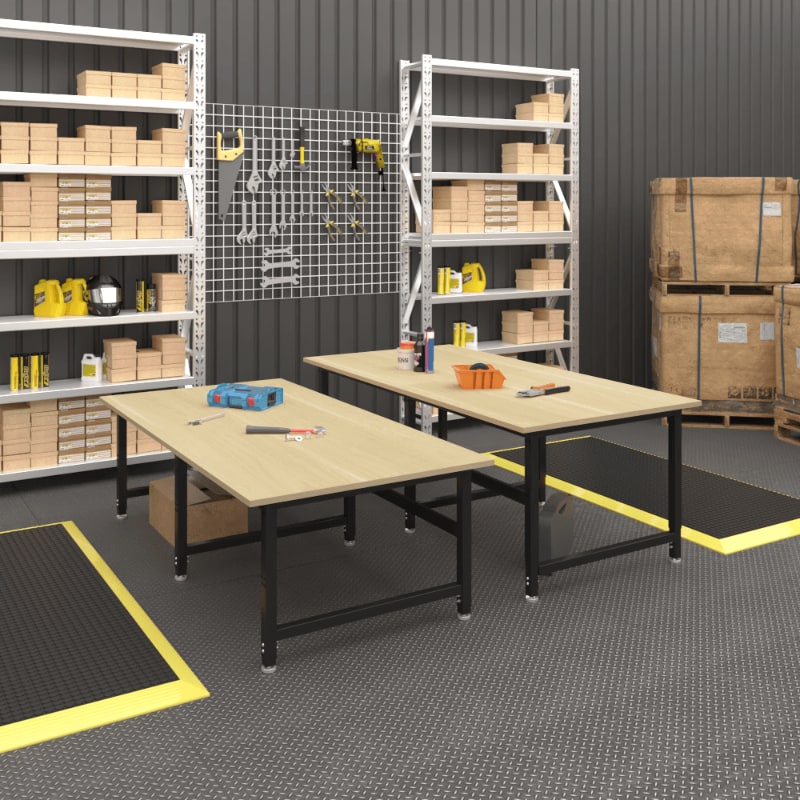Are you struggling to select the right workbench top for your warehouse operations? With various sizes available in the market, it's essential to understand the specific needs of your warehouse to make an informed decision. In this blog post, we will explore the key factors to consider when choosing a workbench top and delve into why some customers opt for Uline's 72x30'' workbench tops while others prefer 4Dock's 72x36'' options.

1. Assess Your Warehouse Space and Layout
The first step in selecting a workbench top is to evaluate the available space in your warehouse. Measure the area where the workbench will be placed, taking into account the clearance required for workers to move around comfortably and efficiently. If space is limited, Uline's 72x30'' workbench top might be the ideal choice as it provides a decent working surface without occupying too much floor space. However, if your warehouse has ample room and you require a larger working area for tasks such as assembly or packaging, 4Dock's 72x36'' workbench top could be more suitable.
2. Consider Your Workbench Usage and Workflow
Think about the primary tasks that will be performed at the workbench. If your operations involve small parts assembly, quality inspection, or light packaging, a 72x30'' workbench top may suffice. Its size allows for sufficient space to organize tools and materials while maintaining an efficient workflow. On the other hand, if your warehouse workflow includes more extensive tasks like large item assembly, heavy packaging, or multiple workers using the bench simultaneously, a 72x36'' workbench top offers a more spacious surface to accommodate these activities. The additional depth provides room for additional tools, materials, and products, reducing the need for workers to constantly reach or move items.
3. Think About Ergonomics and Worker Comfort
Ergonomics plays a crucial role in warehouse productivity and worker well-being. A workbench top that is too small may cause workers to hunch or stretch excessively, leading to discomfort and potential injuries over time. A 72x36'' workbench top can provide a more comfortable working posture as it allows workers to spread out their tools and materials, reducing strain on their bodies. However, even with a smaller 72x30'' workbench top, proper organization and arrangement of tools can help minimize ergonomic issues. Adjustable Height workbench legs can also be considered to adapt the workbench to different worker heights and preferences.
4. Analyze Your Storage and Inventory Requirements
If your workbench will also be used for temporary storage of materials or finished goods, the size of the workbench top becomes even more important. A 72x36'' workbench top offers more space for storing items within reach, reducing the need for additional storage units nearby. This can help streamline your warehouse layout and improve overall efficiency. However, if storage is not a primary function of the workbench and you have designated storage areas elsewhere, a 72x30'' workbench top may be sufficient for your needs.
5. Evaluate the Cost and Budget Constraints
Cost is always a consideration in warehouse operations. Generally, larger workbench tops like 72x36'' may come at a higher price point due to the increased material and manufacturing costs. If you are working within a tight budget, a 72x30'' workbench top can provide a cost-effective solution without compromising too much on functionality. However, it's important to weigh the initial cost against the long-term benefits and efficiency gains that a slightly larger workbench top may offer.
In conclusion, selecting the perfect workbench top for your warehouse involves careful consideration of factors such as space, workflow, ergonomics, storage requirements, and budget. Both 72x30'' and 72x36'' workbench tops have their advantages and are suitable for different warehouse scenarios. By understanding your specific needs and priorities, you can make an informed decision that will enhance productivity and efficiency in your warehouse operations.

